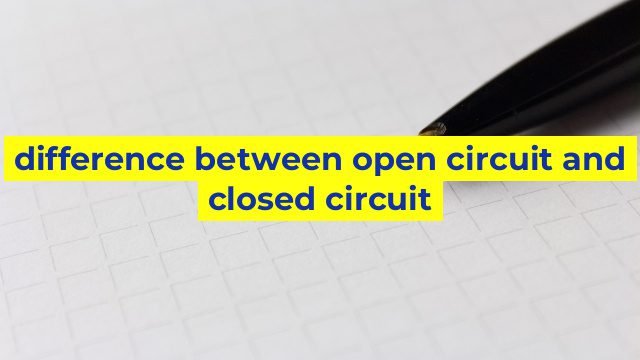The Difference between Open Circuit and Closed Circuit
Circuit is the basic foundation of electrical and electronics engineering. Circuits are used to transfer electric power, control devices, and transmit data. A circuit consists of different components such as power source, switches, resistors, capacitors, and transistors. A circuit can be divided into two types, namely open circuit and closed circuit. Understanding the difference between the two is important in designing electrical and electronic systems.
Open Circuit
An open circuit is a circuit that is incomplete, and it does not allow the flow of electric current. In this circuit, the switches are open, and there is no electrical connection between the source and the load. When the switch is opened, the current cannot flow, and the circuit is considered open.
Open circuits are often caused by a break in the wiring or a faulty component. These circuits can cause system failures and can even be a major safety hazard. Open circuits do not allow the system to operate properly, and it can lead to damage to the system if not repaired quickly.
Closed Circuit
A closed circuit is a circuit that is complete, and it allows the flow of electric current. In this circuit, the switches are closed, and there is a complete electrical connection between the source and the load. When the switch is closed, the current can flow, and the circuit is considered closed.
Closed circuits are essential for the proper functioning of electrical and electronic systems. The current flows through the circuit, and it allows the system to operate. Closed circuits help to prevent damage to the system and ensure the safe operation of the system.
Conclusion
In summary, the difference between open circuit and closed circuit is that the former does not allow the flow of electric current while the latter allows it. Open circuits need repairs to ensure proper system function while closed circuits are essential for the proper functioning of electrical and electronic systems. Understanding the difference between the two is crucial for designing and repairing electrical and electronic systems.
Table difference between open circuit and closed circuit
| Open Circuit | Closed Circuit |
|---|---|
| There is no path for current to flow | A complete path is available for current to flow |
| It does not allow the bulb or any other electrical component to function | Electrical components like bulb, fan etc. can function in a closed circuit. |
| The resistance in an open circuit is infinite | The resistance in a closed circuit is finite |
| An open circuit is represented by a break in the circuit | A closed circuit is represented by a continuous line |
| Open circuit does not consume any power | Power is consumed by electrical components in a closed circuit |


